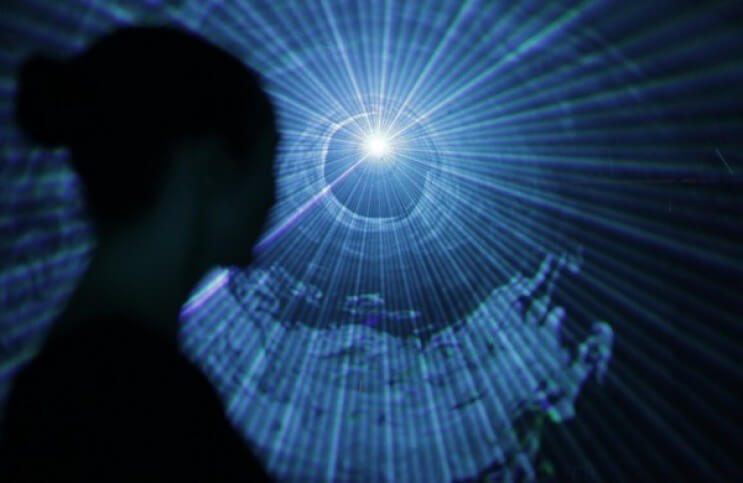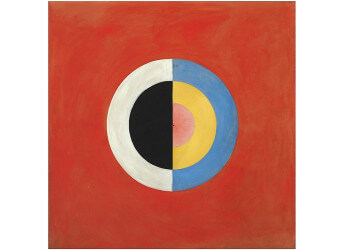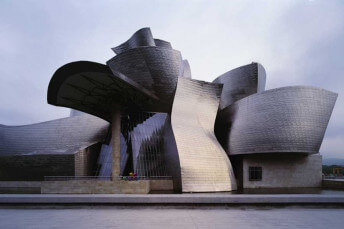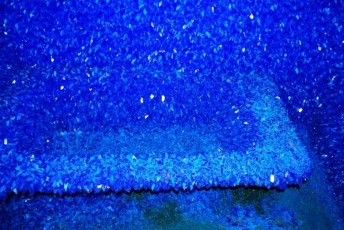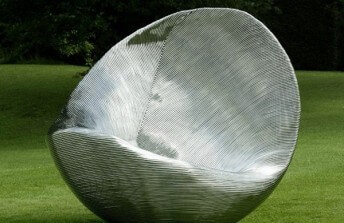Random Quark - Turning Feelings into Abstract Digital Art
Aug 18, 2017
The idea of turning brain waves into abstract digital art has been making the rounds of artist studios, creative agencies and computer labs for years. Back in 2015, I remember visiting an installation by the American artist Lia Chavez at the P3 Studio Artist in Residency at the Cosmopolitan Hotel and Casino in Las Vegas. The installation was called The Octave of Visible Light: A Meditation Nightclub. As Chavez describes the project on her website, “Guests are invited to wear an EEG headset and Chavez guides them through a brief meditation session. The headset reads their brainwaves and, via Bluetooth, transmits a custom-coded signal to the audio visual system.” When I visited the installation, I entered a darkened space where the artist was awaiting me. She smiled a calming, welcoming smile then attached a lightweight metal device to my head. Music was playing. She told me to close my eyes and to clear my head. As I tried to let go of my thoughts, she spoke softly to me, encouraging me to enter a more relaxed mental state. As my mood gradually changed, the LED lighting system in the room also changed, flashing different patterns and different colors that allegedly corresponded to my shifting states of being. The idea is that it was an instantaneous transferal of biofeedback into an aesthetic phenomena. The experience was ephemeral, enjoyable and curious. It was not science, it was art. But it incorporated science in a fascinating way. I later heard from a reliable source that Chavez was offered a large sum of money for her technology, by some corporate giant or another. She declined the offer, insistent that her work was not intended for commercial applications. I respected her then for making that choice, and I respect her even more now that so many others have come along in her wake, eager to cash in on the techno-digi-art craze. The latest comer to the party is an art, design and technology company called random quark, which was recently hired by healthcare marketing giant Saatchi & Saatchi Wellness to find a way to turn the emotions of their employees into art for the backs of their business cards.
Who is random quark?
According to its website, “random quark is a creative technology studio.” But I have to be honest: I have no idea specifically what that means. I understand the words: creative, technology, studio; I am just confused by the implications of putting them together in that order. The company appears to be run by two men: Theodoros Papatheodorou, PhD, a self-described “developer, educator and creative technology enthusiast”, and his partner Tom Chambers, a coder and web developer who “understands pixels inside and out.” The two do not claim to be artists, although they may consider themselves such. But what they do proudly claim is to be able to “combine technology, art and design to create immersive and interactive experiences.” But again, I am not entirely sure what that sentence means. So to get a better idea, I had a look at some of the projects random quark has done in the past.
In 2016, random quark debuted a project called the Emotional Mirror at the Athens Digital Art Festival. This project involved a reflective surface hanging on a wall that broadcast the faces of viewers who walked in front of it, along with additional imagery that was not actually there in reality. This sort of device is called an “enhanced reality” mirror. As people walked by the Emotional Mirror, a computer program connected to the device was busy searching the Internet for tweets, which it was then categorizing as either happy tweets or sad tweets. Whenever people stopped in front of the Emotional Mirror to have a look at themselves,the enhanced reality feature kicked in: first with a drawing, as the mirror detected whether the expression of the viewer was happy or sad then drew either a smiley face or a sad face around the actual face of the viewer; second with tweets, or rather text bubbles floating above the faces of the spectators featuring the happy or sad tweets the program had pulled off the Internet appeared.
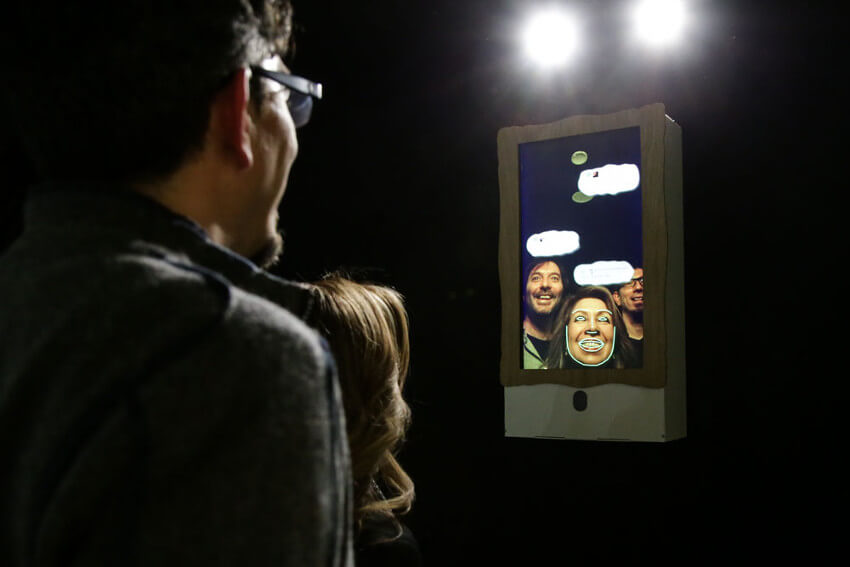 Emotional Mirror, by random quark, currently on view at the Athens international Airport
Emotional Mirror, by random quark, currently on view at the Athens international Airport
Virtual Cats and Mindswarms
Another project random quark did in 2016 was a collaboration with the British technology company Umbrellium. Called Cinder, the objective of the project was to design a virtual cat that could roam the public spaces of Trumpington Community College in Cambridge. Umbrellium is a company that looks for ways to engage the public with technology in ways that enhance community awareness and participation. So in this case, when you walk into the main hall of Trumpington, if you look up at the wall you see another one of those “enhanced reality” mirrors. The reflection you see shows everything that is actually happening in the hall along with the addition of a massive digital cat. The cat interacts with the people on the mirror, and reacts to whatever they do to it. Umbrellium calls this project a “mixed-reality architectural interface,” a euphemism I imagine we will hear more in the future.
 Cinder, the collaborative “enhanced reality” cat project, by random quark and Umbrellium, 2016.
Cinder, the collaborative “enhanced reality” cat project, by random quark and Umbrellium, 2016.
With those other two projects in mind, hopefully you are starting to understand the notion of immersive and interactive experiences, and have some idea of what a creative technology studio does. And that will go a long way to helping you understand the new project random quark just completed for Saatchi & Saatchi Wellness. That new project, called Mindswarm, is, in a way, much simpler than those other projects. And unlike them or any of the other projects the company has done in the past, it lends itself easily to the production of physical artifacts, or what some might call art. The basic idea of Mindswarm is that an EKG is hooked up to a person in a controlled, relaxed environment. That person is then asked to recall a particularly emotional memory. The EKG measures the brain activity that occurs during the memory recall. Then a computer, which has been assigned with pre-selected colors that correspond to seven pre-selected emotions, uses an algorithm to create a kinetic, visual manifestation of the memory. The motion of the visual imagemimics the partially randomized swarming activity of flocks of birds or schools of fish. A snapshot of that visual manifestation can then be taken and printed onto a three-dimensional surface.
 Random quark, When I was young in my country house in Spain (joy & love), Mindswarm painting, 2017, photo courtesy random quark and Saatchi & Saatchi Wellness
Random quark, When I was young in my country house in Spain (joy & love), Mindswarm painting, 2017, photo courtesy random quark and Saatchi & Saatchi Wellness
Art Comes From...Artists?
The first people to participate in the Mindswarm project were employees of Saatchi & Saatchi Wellness. One at a time these employees were led into a room where they allowed themselves to be hooked up to a machine. They let a computer scan their brains and translate their most personal life experiences into data. They then allowed that data to be translated into images that were then printed onto canvases, and given titles based on the specific memory the employee reported thinking about. Each canvas was then subtitled with the emotions that were identified by the computer program while it was conducting the brain scan.
The canvases created in this first use of the Mindswarm technology were shown in an art gallery in London in conjunction with the announcement of the completion of the project. But that is not all. They were also then printed onto the backs of the business cards of each employee who participated in the experiment. In theory, the employee might then have a conversation starter with whomever receives such a business card. Then again, perhaps going into detail about the fear, anger, hate or love you experienced during one of the most tender or horrifying moments of your life might not be the perfect way to start off a new business relationship. But then again, that may be the point. Are these images marketing tools or art? If theywere commissioned by a corporation for use on business cards, they are marketing tools. But if emotionsare being reflected upon by the participants and their associates every time they pull one of those business cards out, that crosses a line into something precious, something meaningful, and something most artists would be probably be proud to achieve with their work.
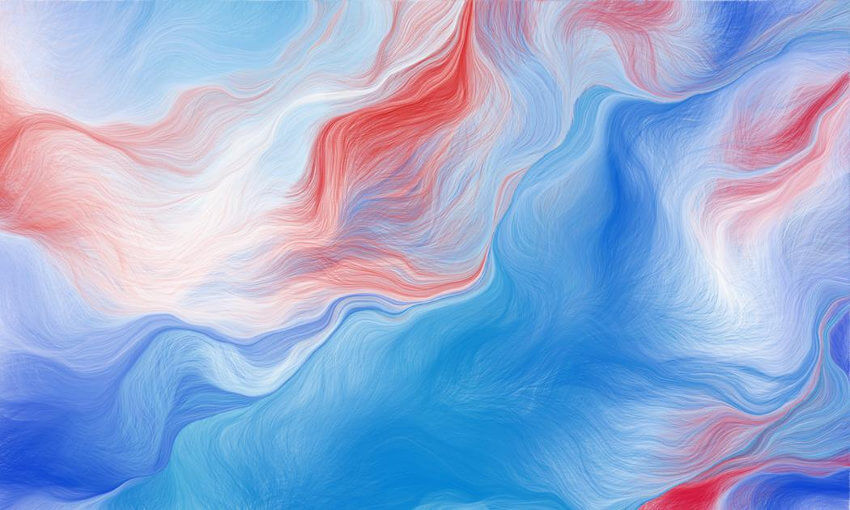 Random quark, Proposal to my fiancé (love & fear), Mindswarm painting, 2017, photo courtesy random quark and Saatchi & Saatchi Wellness
Random quark, Proposal to my fiancé (love & fear), Mindswarm painting, 2017, photo courtesy random quark and Saatchi & Saatchi Wellness
Featured image: Liz Chavez - The Octave of Visible Light: A Meditation Nightclub, live performance presented in partnership with Art Production Fund at The Cosmopolitan of Las Vegas, installation view, 2015, pigmented ink print, 16 x 10 5/8 inches, edition of 5, Photo by Samuel Cox, © Lia Chavez
All images used for illustrative purposes only
By Phillip Barcio
